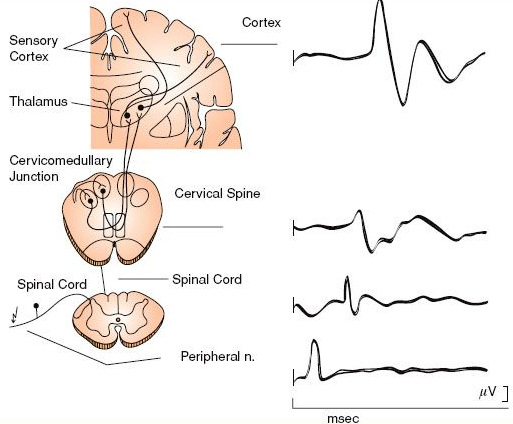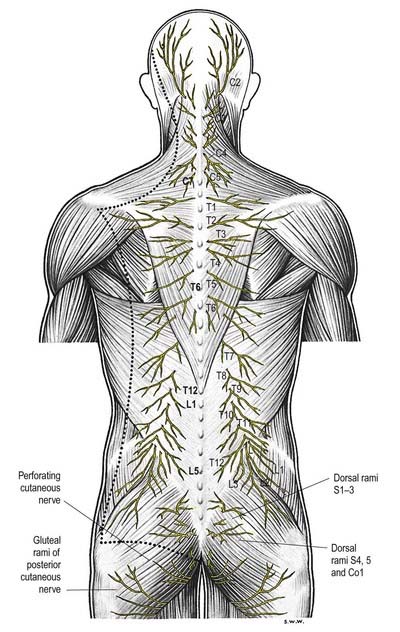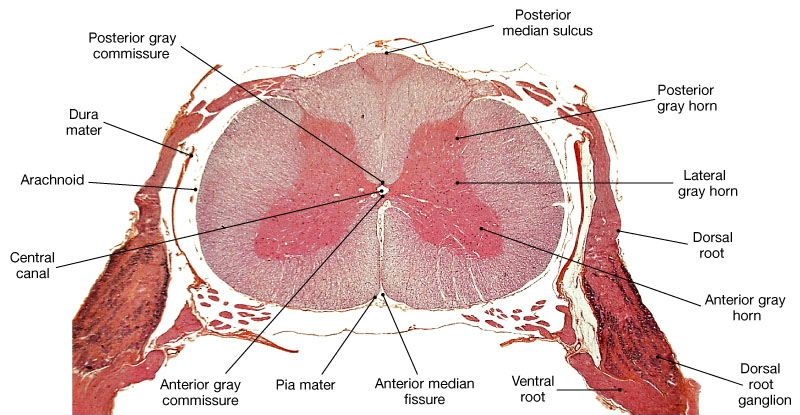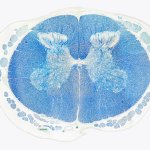The halfway point


It’s official! As of today I have 5 of 10 datasets collected for my dissertation. There’s still a lot of work going forward for sure, this is just the first step, but it’s a big one. Between the last two days I’ve performed three experiments and I’ve found a few other people to help with the next round. If all goes well, I’ll have all the data for the first aim collected in the next few weeks. So what now?
(more…)Pardon the dust…


Well today I’ve had a major demolition project going on at home (see yesterday’s post for details), which has left precious little time for anything else, much less blogging. Sorry, but for the day this is it. As a reminder, no matter how big your goal, no matter how far you’ve come, it’s okay to take a break if you need it. My goal was 365 days of academic blogging and well sometimes you need time away. It doesn’t reset the clock, it just makes you human. So take a minute for yourself if you need it, I certainly do!
I lived!


What a combo breaker, two years of dedication and daily blogging down the toilet because the government was trying extremely hard to kill me. I’m not mad, just disappointed, okay I’m very mad (in the government stuff, not my streak that’s not a big issue). Technically I’m not through the storm quite yet, the power could still go back out, but I have had power longer now than I have in the past few days. Long enough to write a quick update anyway.
(more…)The (other) secret


Some days there’s just so much going on it’s hard to figure out what to write about. Daily writing is hard because some days you have 50 things you want to share and some days you can’t figure out a single thing that would be interesting to write about. While I have a million things to do, none of them are new and interesting enough to share. So today I’ll let you in on my secret.
(more…)Day 227: Coronavirus and the military response – Part 2


Sometimes I hate it when I’m right. The military is as consistent as ever and we have some unfortunate updates today regarding the crew of the U.S.S. Theodore Roosevelt. It is about what I expected, even with the public looking in and I think we can break down the response and I’ll go ahead and make my prediction for what’s going to happen next, spoiler, it won’t be pretty.
Day 226: Coronavirus and the military response


Well I got word yesterday that the coronavirus found its way onto an aircraft carrier. For anyone who’s never seen one in person, because the pictures don’t do it justice, these things are huge. Think floating cities with the crew size to match. Inside an aircraft carrier, there are roughly 3,000+ people who work, live, and maintain the ship. The one in question, the U.S.S. Theodore Roosevelt has over 4,000 crew members and those are just the ones that need to be quarantined. This is bad for a lot of reasons. For those of you who haven’t served in the military, I’ll explain.
Day 225: Class presentations


For the past week we have been utilizing online resources so that classes can continue while we are all social distancing. While this is means that we mostly use Zoom, we also have message boards and other resources that we can use. However, these resources are sometimes a poor substitute for in person classes. This is especially apparent when we have certain assignments for the class, such as a group presentation.
Day 223: Hell is other people


15th century art impression of Dante’s Lucifer from Inferno
Sure, Sartre didn’t mean that hell is literally other people, that is a common misconception and therefore the quote is often misused. However, I’m misusing it on purpose because right now in my situation, hell really is other people. Did I mention that I hate group work? I really do and as a change of pace I’m going to try to explain without the tangents I tend to take because it’s going to be a fairly long story.
Day 222: We’re still experimenting…?

Yesterday we did science. It’s a weird feeling to be doing science when there is a pandemic going on, but I actually enjoyed it. There is something about being in a small(ish) windowless room and getting to tune out the rest of the world for a few hours. Yes, I said a few hours, experimenting takes time. Things are in flux though, even for me when I seem to have the most consistent schedule out of our lab.
Day 221: Doing my part


My first print from way back when I got the 3D printer (a Lulzbot Taz 6).
Another day another update. I have to admit while the situation is fast changing it gives me something new to write about at least. Small victories maybe, I don’t know. The point is I was never one to sit around and let things happen. I’m a fairly busy person, between school and my fellowship I don’t get a lot of time to do things. Thankfully someone else with more time and/or resources has set up a way to help with the coronavirus supply shortage. (more…)
Day 220: Modeling the spread of COVID-19


Here’s the situation. We still have classes despite the county shuttering for a few weeks. I mean they are online classes, don’t panic, we’re using zoom like a lot of schools. However, it means that we still have class work and what not going on. For our last assignment we had to come up with our own problem to solve, then solve it. It wasn’t as easy as it sounds, but that is how I got this request (see the title of the post). Don’t worry I’ll explain. (more…)
Day 219: The county is on lockdown now


Finally. The county has asked that everyone shelter in place basically. Only go out if you need to go out. Everything is shut down and people seem to be taking this seriously (somewhat). While I am still pissed off about yesterday’s statements by the GOP, this is a good thing and I’ll take a win when we can get it. Unfortunately, there are some caveats to the lockdown and of course it affects me… (more…)
Day 218: You too are expendable


Well after yesterday’s post there has been a huge shift in rhetoric, so either the GOP reads my blog and thought it would be great to apply the same principle to America in general, or I just happened to guess right. I have to say, being okay with mass murdering a large portion of Americans seems like a bad idea, but clearly we have only the “smartest” people working in our government and not just the wealthiest… right? For posterity’s sake let me explain since (I hope) 10 years from now someone reading this will have no clue what I’m referring to.
The VA wants me dead, do you?


I swear I didn’t kill anyone by the incredibly talented Lora Zombie.
I hate writing about the VA, I really do. Unfortunately because I live here in the US where we think it’s our right to die from disease and have ludicrous amounts of medical debt for a sprained ankle, it’s a conversation we should have. Hello America, I served my country and now my country wants me dead. I sincerely wish I was exaggerating. Please hold your, “thank you for your service” for the end that way I can tell you to go fuck yourself. Let me explain…
Day 216: So I’m “essential” now…


Fun fact, I love pandemic movies. Movies, not so much living through one. As humans we are selfish, greedy, prone to panic, and for being “evolved” we are so very, very stupid. Basically every dumb choice you see the characters in those movies make while screaming, “you idiot, that would never happen in real life!” Well, it’s happening and wow does it do a number on a persons mental health. But hey guess what? I’m essential, so let’s figure out what that means in a time where the world is practically on fire.
Day 215: What now?!


Social distancing is important, but maybe not this distant…
Well if you missed it, yesterday was our final post in the know your spinal cord series. I’m not crying, you’re crying! Now the question is, what does that mean for the blog? An excellent question, one I wish I would’ve asked myself! Let’s take a look at some of the things that we will (probably) be discussing now that our designated topic has run its course.
Know your spinal cord – Translating neural signals


Here we are on day fifty-three, we are nearing the end for sure. I was going to end the series today, but there is at least one more thing that I think will be interesting to cover. As always, you can find all of our posts in the neuroanatomy category, after all there are quite a few now. Today we are going to talk about how the brain and muscles use different signals to communicate. Basically, they speak different languages; let’s talk about what that means.
Day 212: A small break
It was bound to happen, with the COVID-19 outbreak, my entire schedule has been shifting faster than I can keep up with it. I was going to force myself to write today, but I need a break. I’m exhausted both mentally and physically. There is a possibility I won’t be getting my stipend from the school this month, even though I’m still working, and I have assignments due soon, so I can’t dedicate the normal hour or so I would writing.
Friendly reminder, wash your hands, don’t touch your face, and practice social distancing. Even if you’re healthy, you can infect people that are not healthy or worse, people who work with others who are not healthy. Don’t be selfish! It may seem stupid now, but if we don’t do these things then it will get a lot worse and no one wants that. We can get through this if we all work together.
Know your spinal cord – Transcutaneous spinal direct current stimulation


E amplitude distribution over the spinal cord and nerve surface. The color scale on the right is normalized with respect to the maximum of E amplitude in the spinal cord.
Well after our short break yesterday with my biweekly review paper, it’s back to the know your spinal cord series and we’re on day fifty-two! If you’re here for the first time, you can find the posts in this mini-series in the neuroanatomy category. We’ve taken a few twists and turns since we’ve started the series, but we’ve covered way more than I originally planned. We’ve covered how transcutaneous spinal cord stimulation is thought to work, that post focused on the type of spinal cord stimulation I’m researching. However, there are other ways to stimulate the cord. Transcutaneous spinal direct current stimulation (tsDCS) is a different way to stimulate and today we will talk about the difference.
Know your spinal cord – Microglia


We cover this in the post, but it’s so cool I had to use it for the featured image.
It’s day fifty-one of knowing your spinal cord! For those of you who just found us, fear not we have all these posts in reverse chronological order listed in our neuroanatomy category. For everyone else, lately we’ve been talking about glial cells. This came about from the post on glial scarring which made me realize we should probably define glia. There are four types of glial cells found in the spinal cord (that we know of) we’ve covered three of them already and today we are talking about the last kind, the microglia.
Know your spinal cord – Ependymocytes


Ependymal cells, which create cerebral spinal fluid (CSF), line the ventricles of the brain and central canal of the spinal cord. These cells are cuboidal to columnar and have cilia and microvilli on their surfaces to circulate and absorb CSF.
We made it to yet another milestone, day fifty in our know your spinal cord series! As usual, you can find each and every one of these posts neatly organized in reverse chronological order using our neuroanatomy category. For the past couple of posts, we’ve introduced the types of glial cells, probably a bit poorly, but they are just so complex we can only really focus on a few of the functions. Needless to say they are very important cells. Today we are talking about the third (of four) types of glial cells found in the spinal cord (and brain), that is the ependymocyte. Let’s take a look.
Know your spinal cord – Astrocytes


SNL induces MCP-1 upregulation in spinal cord astrocytes (A–C)MCP-1 expression in the spinal cord of naïve animals (A) and SNL animals at 3 days (B) and 10 days (C). Scale bar, 200 μm. (D–F) High magnification images of (A–C), indicated in the white boxes of A–C, show the dorsal horn of the ipsilateral spinal cord. Scale bar, 100 μm. (G–I) Double staining shows that MCP-1 is colocalized with GFAP, a marker for astrocytes (G), but not with NeuN, a marker for neurons (H) or OX42, marker for microglia (I). Scale bar, 50 μm. DOI: 10.1523/JNEUROSCI.3623-08.2009
Day forty-nine in the spinal cord series! You can find all the posts in this series in our super useful neuroanatomy category. A couple of posts back we introduced glial scarring, one of the problems we need to overcome to help people with spinal cord injuries. That led to the realization that we needed to introduce the glial cells, so yesterday we covered the oligodendrocytes and today we are talking about the astrocyte. Now that we have some background of how we got here, let’s introduce today’s topic.
Know your spinal cord – Oligodendrocytes


We made it to day forty-eight! As always, the neuroanatomy category will help you find each and every post in the spinal cord series. It’s all really good stuff! We mentioned yesterday that this was coming, we’re going to do a quick breakdown of the types of glial cells just to make understanding the glial scarring post easier. Plus it helps to understand the functions of glial cells in general when we talk about things that could go wrong. With that, let’s get into oligodendrocytes!
Know your spinal cord – Glial scarring


Previously injured nerve fibers (red) are shown regrowing through a dense astrocyte scar (green). UCLA research shows that astrocyte scars actually help support nerve fiber regeneration. You can read more about the study from UCLA here.
Here we are at day forty-seven of spinal cord posts. We are definitely wrapping up our series sad to say, maybe we can get to day fifty, that would be a nice round number to stop at. For those of you who want to read all the other posts, the neuroanatomy category has everything in reverse chronological order and will teach you everything from the medullary pyramids, the cauda equina, and all the stuff in between. Today we are talking about glial scarring and why it’s such a problem a topic I realized we should touch on after talking about the problems with invasive spinal stimulation methods yesterday.
Know your spinal cord – Invasive spinal stimulation techniques


It’s day forty-six in our spinal cord series. While we’re nearing the end (maybe), there are still a few things to cover. First, if you’re new, you can find all of the posts in the neuroanatomy category for when you need a quick spinal cord fix. I’ve been debating about this post for some time, but I figure we might as well cover it since we’re here. Today we are going to talk briefly about invasive spinal stimulation and what the future might hold.
Know your spinal cord – Compound action potentials


Image from: Get body smart
Day forty-five of the know your spinal cord series is here! With so many posts, you may be wondering how to find them all. Fear not, we have a super helpful neuroanatomy category for all your spinal cord needs. For the past few posts we’ve looked at some very interesting tools to probe the spinal cord. We’ve seen that there are quite a few ways we can go about it, but more importantly they all tell us something slightly different. Today we are looking at the product of that stimulation, the compound action potential.
Know your spinal cord – Transcutaneous Spinal Stimulation


Welcome to day forty-four in the know your spinal cord series! As usual all of our posts are in a super easy to find neuroanatomy category. Now that we’ve covered our into into diagnostic tools to probe the spinal cord, let’s look at some of the ways we are working to help treat spinal cord injuries. Today we’re looking at a heavy hitter so to speak and something my research is focused on, transcutaneous spinal stimulation (TSS). Let’s take a look!
Know your spinal cord – The V-wave


We’ve made it to day forty-three of our know your spinal cord series! While that is a lot of posts, we’ve made it super simple for you to find all of them with our neuroanatomy category. Lately, we’ve looked at several different tools in our spinal cord probing toolbox. We’ve seen all sorts of different ways to create a response, but we are still missing one important tool for our exploration into the unknown spinal cord world and that is what we are going to talk about today!
Know your spinal cord – Somatosensory evoked potentials


Somatosensory evoked potentials travel from peripheral nerves to the brain and we can record the response along the spinal cord and the brain non-invasively.
We’re back again with day forty-two of spinal cord knowledge series and day 200 in our 365 days of academia series! A friendly reminder that you can find each and every one of these posts in our very helpful neuroanatomy category. Yesterday we looked at motor evoked potentials, or electrical pulses that we create which travel from the brain to the muscles. Today we are looking at the almost reverse, signals we create originating in the peripheral nerves and arriving at the somatosensory cortex of the brain.
Know your spinal cord – Motor evoked potentials


Transcutaneous magnetic stimulation (left) stimulating a portion of the motor cortex, which travels down the spine and activates a muscle (right)
Day forty-one in the know your spinal cord series. While the number of posts is going up, we made them easy to find by using our awesome neuroanatomy category! Maybe we did this a bit backwards, but it’s our series and this was the order we did it in. Yesterday we covered cervicomedullary motor evoked potentials, which is a subset of what we will be covering today. So again, slightly out of order, but hey let’s look at motor evoked potentials.
Know your spinal cord – Cervicomedullary motor evoked potentials


We made it, day forty in the know your spinal cord series! I honestly didn’t think we would get this far into things, but here we are. As per usual, if you’re new you can find all of the posts in this series in our super helpful neuroanatomy category! For the rest of you, or the ones interested in this topic, today we are looking at yet another tool in uncovering the secrets of the spinal cord.
Know your spinal cord – The F-wave


It’s day thirty-nine of our know your spinal cord series and we’re only touching the surface (so to speak)! If you’re just joining us, then welcome! You can find all of our spinal cord knowledge in the handy neuroanatomy category. Well as these things typically happen, yesterday brought up an interesting gap in our knowledge base. While I introduced the H-reflex, we never talked about the F-wave! So of course yesterday’s post probably left some of you scratching your head as to what an F-wave even is, fear not we’re going to clear that up today!
Know your spinal cord – The spinotectal tract


Welcome to day thirty-eight in the know your spinal cord series. As always, you can find the entire know your spinal cord series exclusively listed under our neuroanatomy category. We’ve amassed quite a bit of spinal information and I’ve gotten into more detail than I originally planned, which is part of the reason why we are going back and covering some of the things we skipped over. Today is one of those topics, we will be talking about the spinotectal tract, not to be confused with the tectospinal tract, which we already covered.
Know your spinal cord – The spinoreticular tract


We’ve arrived at day thirty-seven in the spinal cord series and we’re still covering new ground. You can find all of our sweet spinal cord action in the neuroanatomy category, which at this point is pretty extensive for a high-level look. Yesterday we talked about the reticulospinal tracts so today we are talking about the sister tract, the spinoreticular tract. Are they related, or is it all just in the name?
Know your spinal cord – The reticulospinal tracts


Reconstruction of the nuclear masses of the brain stem
It’s day thirty-six in our spinal cord series and I yesterday I lied, we’re not done quite yet. First, as always we have a super helpful neuroanatomy category for anyone wanting to read the posts from this series. For the rest of us, today we’re talking about the reticulospinal tracts, yes tracts with an s. There is a good reason for this, but you’ll have to read on to see why. (more…)
Know your spinal cord – The Tectospinal tract


Welcome to day thirty-five in the know your spinal cord series! For the new people, we have a whole neuroanatomy category dedicated to these posts! For everyone else (or those of you just interested in today’s topic, this is going to be on another smaller tract of the spinal cord we haven’t covered yet. Today we are talking about the tectospinal tract, not to be confused with the spinotectal tract, so let’s get started.
Know your spinal cord – The Vestibulospinal tract


No, we’re not moving away from the spine, but we are talking about the cranial nerves.
It’s day thirty-four in our spinal cord series. As usual, if you’re new here welcome and you can find each and every post in our series in the handy neuroanatomy category! All the posts are in reverse chronological order and while we don’t technically have a specific order, you should probably start with the medullary pyramids and work your way forward. If you’re here, then you probably are interested in the vestibulospinal tract, something we haven’t covered yet, but fear not, we are going to do that now.
Know your spinal cord – The landmarks


A human cervical spinal cord slice. Once you’ve read this post, you should be able to identify the major parts and tell which side is the front of the cord.
Welcome to day thirty-three in our series. For those of you who are just finding us, we have every one of these posts in our neuroanatomy category in reverse chronological order. Today we’re going to backtract (get it?) a little and go over something basic, but something we’ve skipped over to this point. We never really talked about the landmarks of a spinal cord slice. So today, we are going to take a detour and go over spinal cord features.
Know your spinal cord – The Ramus


Today is day thirty-two in our know your spinal cord series. If you’re just joining in, as I usually do in the intro, we have a whole neuroanatomy category just for these posts so you don’t have to dig for them! Today we are covering a couple of structures that fall under the same broad category, ramus. What are they and what do they have to do with the spinal cord? Well that’s what we’re about to find out!
Know your spinal cord – The spinal nerves (revisited)


Here we are at day thirty one of knowing your spinal cord and we’re still going strong. I’m very happy that I cataloged all of these posts in the super handy neuroanatomy category, which should make it easy for you to find each and every one of them! Today we’re talking about something we’ve touched on in the past, but deserves its own post, the spinal nerves. We need to cover this for the next couple of posts, where things get a little… odd. So let’s get started!
Know your spinal cord – The anterior white commissure


Cross section through human spinal cord (lumbar region, L1) showing motor neurons. Astrocytes and oligodendrocytes are labeled ‘A’ and ‘O’, respectively. The objective magnification used is 40x.
Welcome to day thirty of knowing your spinal cord. I feel like that is a lot of spinal cord knowledge for just covering the basics. In any case, if you’re just finding us, welcome! I’ve created a whole new neuroanatomy category just for these posts so you can find them easy and they are in reverse chronological order. Is the anterior white commissure a tract of the spinal cord? Well not really, but it does have an important job and we keep referencing it, so let’s talk about what it does exactly.
Know your spinal cord – The spino-olivary tract


Spinal cord anatomy
Day twenty-nine, wow does time fly! We have over four weeks worth of fun spinal knowledge for you to tap into, all in reverse chronological order in our handy neuroanatomy category! If you read the title, you know we’re back on tract (see what I did there?). Today we’re talking the spino-olivary tract, or is it the olivospinal tract? Keep reading to find out!
Know your spinal cord – Cauda equina syndrome


Here we are on day twenty-eight of knowing your spinal cord. A friendly reminder, the entire series has its own neuroanatomy category where you can catch up on any posts you missed or if you just want a reminder on something we already covered. We’ve already covered quite a bit of spinal disorders, but there is one more that I want to talk about and like our series where we started at the top of the cord and worked our way down, we are now going to cover damage to the bottom of the cord, specifically the cauda equina.
Know your spinal cord – Motor neuron disease


Kultschitzky staining was used here and shows marked symmetrical demyelination (whitening regions) in the anteriolateral roots (especially pyramidal tract) of the spinal cord
It’s day twenty-six already! For those of you who are just finding us, you can find all of the posts in our super cool neuroanatomy category. We’ve already covered a lot of spinal disorders, but one of the larger diseases that we have yet to cover is motor neuron disease. Technically a family of diseases, we will look at the commonalities and causes, so with that introduction, let’s get going.
Know your spinal cord – The H-reflex


We measure the H-reflex by applying an electrical stimulus (S) behind the knee, the ground (G) gets placed around the soleus and the recording electrode (R) is placed inline below, this is the route the nerve takes.
Yesterday we had a bit of a break so I could share a critical review paper. That means this is day twenty-five of the know your spinal cord series! We’ve also hit the halfway mark in our 365 days of academia challenge! If you’re new here, you can find all of the fun spinal cord knowledge we’ve amassed by checking out our neuroanatomy category! We are going to take a step away from spinal cord disorders to talk about something we kind of covered, but deserves a more in-depth exploration. This is all you wanted to know about the H-reflex, so let’s dive in.
Know your spinal cord – Tabes dorsalis


We’ve made it to day twenty-four of fun spinal cord knowledge! If you’re just joining us, we have a whole new neuroanatomy category for you to find all the posts in this series in reverse chronological order. If you want to know everything, then you’ll want to start at the beginning with the medullary pyramids. Over the past week in our series we’ve been talking about spinal cord disorders and today we are looking at something called tabes dorsalis, let’s begin!
Know your spinal cord – Lichtheim’s disease


MRI showing Lichtheim’s disease caused from nitrous oxide (we show another case below)
It’s day twenty-three in our little series called know your spinal cord. For those just finding us, you can read the rest of the posts in our special neuroanatomy category created just for these posts! If I’ve counted correctly, this will be the seventh post on different spinal cord disorders and today we are covering something called Lichtheim’s disease, so let’s take a look.
Know your spinal cord – Central cord syndrome


Welcome to day twenty two in the knowing your spinal cord series! As per my usual intro, you can find the rest of the series in reverse chronological order under our spiffy new neuroanatomy category. Today we are covering another type of spinal cord injury, like the last two posts, this will cover what happens when a certain area (central area) of the cord is damaged. With that, let’s talk spinal cord.
Know your spinal cord – Anterior spinal artery syndrome


Today we hit the three week mark in knowing your spinal cord! I’m hoping we can do a full four weeks, that would be quite the collection of knowledge. For those of you just joining in, you can find all of our posts in the neuroanatomy category ordered in reverse chronological order. As per the last few posts, we’ve covered the majority of the anatomy and now we are looking at different disorders of the spinal cord. Today we’re going to cover another type of injury, this one called anterior spinal artery syndrome, so let’s get started!
Know your spinal cord – Brown-Sequard Syndrome


We’ve made it to day twenty in our little series on knowing your spinal cord. As always, you can find each and every post in this series through our neuroanatomy category. Since we’ve covered all the major neuroanatomy, the latest posts have been on spinal cord diseases and disorders. That said, today we’re covering Brown-Sequard syndrome, so let’s take a look at what this is.


